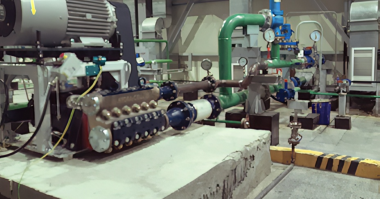Author: Julian Yeo
The beauty of WirelessHART gas detectors is that they offer deployment flexibility – they can be placed anywhere! So what are the best practices for installing and building your network of WirelessHART gas detectors?
In the first part of this two-part series, we will cover network deployment considerations for wireless gas detection. In part two, we will review considerations for the actual placement of your gas detection instruments.
Considerations for Building Your Network for WirelessHART Gas Detection
When you commission your network, be sure to install the gateway and get it operational first. This will ensure that all devices commissioned subsequently in the network can connect easily to the gateway with no trouble.
After you have setup your gateway, next commission the devices closest to the gateway. Why? This is the way WirelessHART networks operate – like a spider web mesh. A best practice is to locate the gateway at the center of the network ore and then you start commissioning move by moving out of that central circle. The goal is to have the outer circle of devices connectings to the gateway through the inner circle. Build up from within out.
During commissioning, allow at least 4 hours for the network to stabilize. Let’s say you deploy 50 WirelessHART gas detection devices, you may see several connecting within that first hour, but it’s best to give at least 4 hours for the network manager to find the optimal routing paths amongst all 50 devices.
To ensure maximum reliability, there are several guidelines recommended by the FieldComm Group, the organization responsible for the development and management of WirelessHART technology.
1. Rule of threes. If you want to have a reliable MESH network, it needs to have a minimum of 3 neighboring WirelessHART gas detection devices. Let’s go back to that spider web mesh visualization. In a mesh network, if one thread is broken, there are other paths to circle around. This is known as redundant pathways. In order to have redundant pathways, you need to have multiple devices to get the message through to the gateway, so the best practice is to have 3 devices. If one device stops functioning properly, then there are secondary and tertiary paths to get the data through the network.
2. Rule of fives. When setting up your network, you should have at least 5 WirelessHART instruments within the effective range of the gateway. Having a minimum of 5 wireless gas detection instruments is the critical threshold number needed to form a reasonable (not robust) network or reasonable strength.
3. Rule of percentages. Let’s say you deploy a huge network with 100 devices, best practices dictate having 25% of your instruments within the effective range of the gateway. To effectively build from within out, you want to have a sufficient number of devices in your inner circle. The devices in the inner circle (the parent devices) route messages from the outer circle to the gateway. If you have too few parent devices within the effective range, you run the risk of introducing choke points – the possibility of having too many messages funneling through too few devices. Having 25 instruments within the effective range of the gateway is a ‘sweet spot’ that ensures the network load is more evenly distributed.
Another critical consideration is effective range or ‘line of sight’. There are different placement options based on the various obstacles that may exist, in a refinery for example. There is a certain distance where one device can have optimal transmissionly to another device; in more open spaces, the effective range is increased.
Download this whitepaper for details on the varied ranges for clear line of sight vs. obstruction.
If you have questions about how to set up your wireless gas detection network, post in the comments section!





Comments